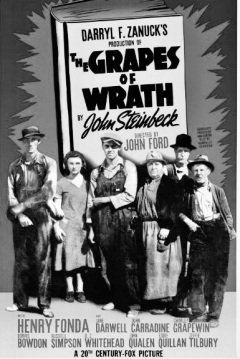
When one looks at John Ford’s adaptation of THE GRAPES OF WRATH, it is nearly impossible to separate all the dramatic events unfolding on screen from the very real poverty that many Americans had experienced during the Great Depression. THE GRAPES OF WRATH presents life in the 1930s based on a story by writer John Steinbeck.
It was a time when many people lost everything and hit the road. Steinbeck’s views of extreme financial and social conditions drive this tale about a family nearly wiped out by the Dust Bowl.
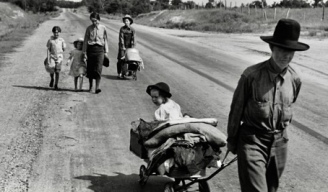
We watch the Joads travel across the country, and as they head west in search of better opportunities, their situation still resonates with us. Perhaps because many Americans still live at or below the poverty level. The recent Academy Award winner NOMADLAND (2020), with its similar themes, reminds us of this.
The heart and soul of Steinbeck’s story is that the Joads are decent folks. They had a stable life, but things became bleak. The anxieties a struggling family experiences in uncertain economic times are depicted here. Also depicted is the sad fact that many Americans placed blind faith in their financial institutions, believing the banks would help bail them out. But of course, many of the banks went under.
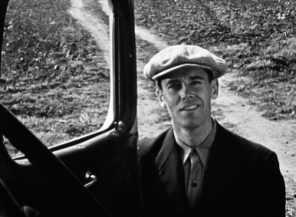
The Joads lose their farm because of hardship in the Dust Bowl, just as the eldest son Tom (Henry Fonda, in an iconic role) is released from prison. He arrives at their homestead the day they are being evicted. He leads them west to California to start over.
Of course, Depression era stories on the big screen were not new in 1940. One earlier example is 1934’s OUR DAILY BREAD, directed by King Vidor. It is about people working together on a farm without corporate interference. Despite a series of setbacks, their efforts are rewarded at the end. The hope from that cooperative, possibly communist, ideal is something that was ingrained in the people that Steinbeck met and wrote about.
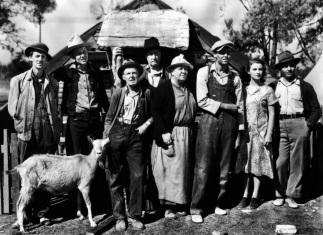
They may be facing dire conditions, but they soldier on because they do not want to fail. And there is that glimmer of hope they might beat the odds when they reach the so-called ‘promised land’ of California. Incidentally, people still go to California today to succeed, often to find fame and fortune in the movie and television industry. The golden state still lures idealistic, naive hopefuls from other parts of the country.
What helps make THE GRAPES OF WRATH a classic in the cinematic sense is its sure-handed direction by John Ford,;its striking cinematography by Gregg Toland; and a wonderful cast of players who often appeared in Ford’s other productions. Ford received an Oscar for his work and so did Jane Darwell.
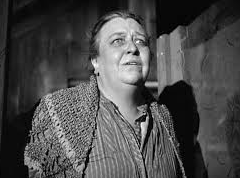
On a related note, I have never understood why Miss Darwell didn’t get better parts after her lauded performance in this picture. Her characterization of Ma Joad earned the award for best supporting actress. But she had several thankless nothing parts right after this…including a terrible one on loan to Warners as a grandma in the forgettable comedy THIEVES FALL OUT (1941).
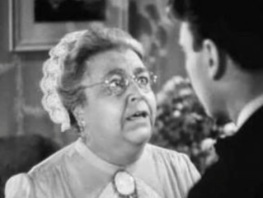
In fact, when you watch her in something like THIEVES FALL OUT, where you see just how much her talent is wasted, it begs the question– why does such a great performer, recognized across the motion picture industry as being one of the top actresses, get stuck with such dreadful material?
Of course Darwell would have other minor parts in John Ford pictures later in her career. She turns up in 3 GODFATHERS (1948), THE SUN SHINES BRIGHT (1953) and THE LAST HURRAH (1958). So it wasn’t all bad. But I did expect more for the old gal, just like Tom Joad expected more for his family.
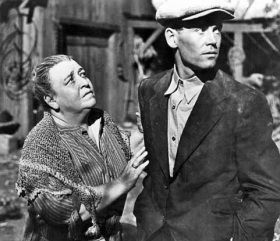
I need to re-read this book